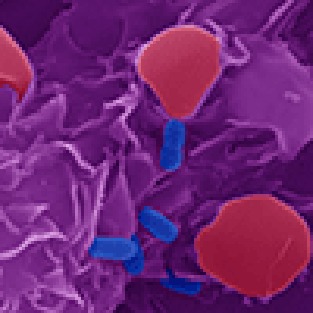- Record: found
- Abstract: found
- Article: found
The Escherichia coli effector EspJ blocks Src kinase activity via amidation and ADP ribosylation

Read this article at
Abstract
The hallmark of enteropathogenic Escherichia coli (EPEC) infection is the formation of actin-rich pedestal-like structures, which are generated following phosphorylation of the bacterial effector Tir by cellular Src and Abl family tyrosine kinases. This leads to recruitment of the Nck–WIP–N-WASP complex that triggers Arp2/3-dependent actin polymerization in the host cell. The same phosphorylation-mediated signalling network is also assembled downstream of the Vaccinia virus protein A36 and the phagocytic Fc-gamma receptor FcγRIIa. Here we report that the EPEC type-III secretion system effector EspJ inhibits autophosphorylation of Src and phosphorylation of the Src substrates Tir and FcγRIIa. Consistent with this, EspJ inhibits actin polymerization downstream of EPEC, Vaccinia virus and opsonized red blood cells. We identify EspJ as a unique adenosine diphosphate (ADP) ribosyltransferase that directly inhibits Src kinase by simultaneous amidation and ADP ribosylation of the conserved kinase-domain residue, Src E310, resulting in glutamine-ADP ribose.
Abstract
 Non-receptor tyrosine kinases such as Src play fundamental roles in host–pathogen
interactions and phagocytosis. Here, Young
et al. show that an enteropathogenic
Escherichia coli (EPEC) protein, EspJ, inhibits Src activity by simultaneous amidation and ADP ribosylation
of a conserved residue on the kinase.
Non-receptor tyrosine kinases such as Src play fundamental roles in host–pathogen
interactions and phagocytosis. Here, Young
et al. show that an enteropathogenic
Escherichia coli (EPEC) protein, EspJ, inhibits Src activity by simultaneous amidation and ADP ribosylation
of a conserved residue on the kinase.
Related collections
Most cited references30
- Record: found
- Abstract: found
- Article: not found
Crystal structure of the catalytic subunit of cyclic adenosine monophosphate-dependent protein kinase.
- Record: found
- Abstract: found
- Article: not found
Src kinases as therapeutic targets for cancer.
- Record: found
- Abstract: found
- Article: not found